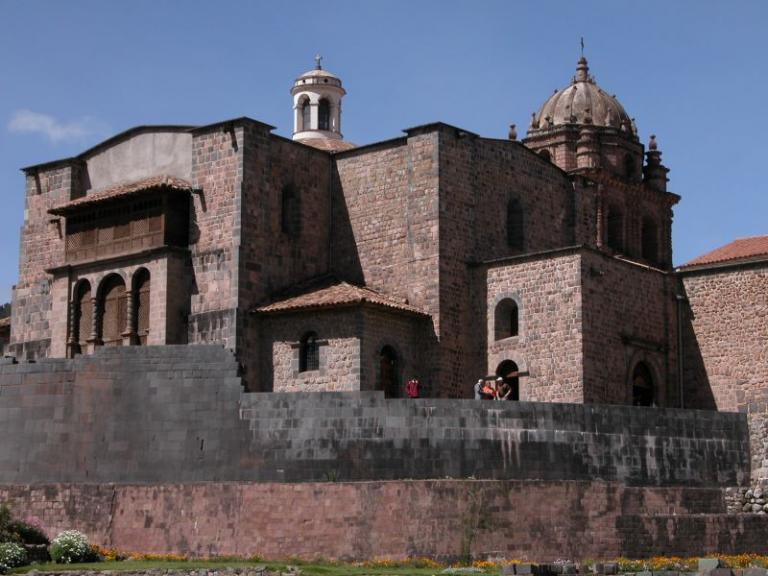
It simply demands saying: We’re in hot water now.
But we began the morning with a visit to what is left of the once enormously important Inca temple of Coricancha (or Qoricancha, or whatever spelling you prefer), which was principally dedicated to Inti, the sun god. The name, in Quechua, means something like “golden enclosure” — which seems to have been literally true: It is said that the walls of the temple were plated with thick gold (or, sometimes, with thick silver). Moreover, there was a large garden of golden statues of humans and of various animals and plants before the temple. The sheer lavishness of the Coricancha’s wealth inspired the pious Christianity of the Spanish conquistadores, obliging them (in a very devout way, of course) to treacherously murder the last Inca ruler and, it is said, to ravish the virgin girls who were assigned to the sanctuary.
Very little of the Inca temple remains. Instead, the Dominican church and monastery of Santo Domingo — St. Dominic, after whom the Dominican order was named — occupy the site. But some of the retaining walls and other walls of the Inca shrine survive still today. In fact, they’re in remarkably good shape, especially when contrasted with the church and monastery, which have twice been leveled by devastating earthquakes.
Those walls are impressive. They fit together beautifully — in the Inca style, without mortar — and look as if they had been shaped just yesterday, new and smooth.
Several features of the temple stood out to me from our guide’s description. I’ll mention just two of them:
Evidently, water was purified in the temple in some ritual fashion, and it then flowed from the temple outside. Ordinary people could use that water to wash and purify themselves; only priests and high members of the royal family were permitted to enter into the innermost areas of the Coricancha.
There were definite astronomical and cosmological aspects to the Coricancha, including a window through which the sun would shine on the morning of the winter solstice — which happens, for this year, to have been today. A large and fairly detailed representation of the Milky Way is said to have appeared on the ceiling in one area.
Posted from Aguas Calientes, Peru











